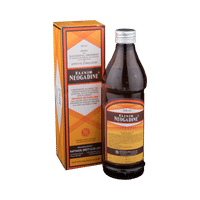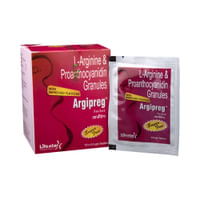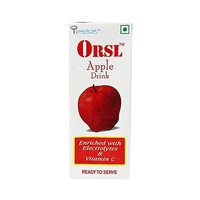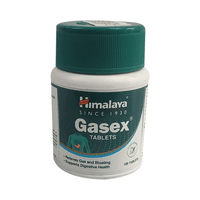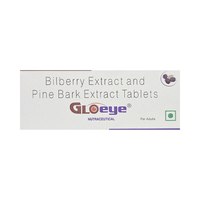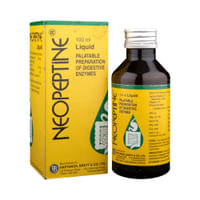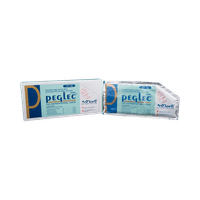Nocin L Ointment
Rs.182for 1 tube(s) (15 gm Ointment each)
food interaction for Nocin L
alcohol interaction for Nocin L
pregnancy interaction for Nocin L
lactation interaction for Nocin L
medicine interaction for Nocin L
food
alcohol
pregnancy
lactation
medicine
No interaction found/established
No interaction found/established
Information regarding the use of Nocin L Ointment during pregnancy is not available. Please consult your doctor.
CONSULT YOUR DOCTOR
Information regarding the use of Nocin L Ointment during breastfeeding is not available. Please consult your doctor.
CONSULT YOUR DOCTOR
No interaction found/established
SALT INFORMATION FOR Nocin L
Bacitracin(400IU)
Uses
Bacitracin is used in the treatment of bacterial skin infections.
How it works
Bacitracin is an antibiotic. It kills bacteria by preventing them from forming their own protective covering (cell wall) which is required for their survival in the human body.
Common side effects
No common side effects seen
Lidocaine(40mg)
Uses
Lidocaine is used for local anesthesia.
How it works
Lidocaine is a local anesthetic. It works by blocking the transmission of pain signals from the nerves to the brain. This helps to decrease the sensation of pain.
Common side effects
Allergic reaction, Application site reactions (burning, irritation, itching and redness)
Neomycin(3400IU)
Uses
Neomycin is used in the treatment of bacterial infections.
How it works
Neomycin is an antibiotic. It stops bacterial growth by preventing synthesis of essential proteins required by bacteria to carry out vital functions.
Common side effects
Application site reactions (burning, irritation, itching and redness)
Polymyxin B(5000IU)
Uses
Polymyxin B is used in the treatment of severe bacterial infections. It is used to treat certain types of serious infections which are not responding to other antibiotics.
How it works
Polymyxin B is an antibiotic. It kills bacteria by destroying the bacterial cell membrane.
Common side effects
Burning sensation, Eye irritation
SUBSTITUTES FOR Nocin L
No substitutes foundExpert advice FOR Nocin L
- Bacitracin is used to treat bacterial skin infections.
- You may have to use it for a long time before your infection starts to improve. Be patient and keep using it every day.
- Apply it as a thin layer onto affected site on skin.
- It may cause minor burning, stinging, or irritation when applied. Inform your doctor if this does not go away.
- Avoid contact with your eyes, nose or mouth. Rinse it off with water if you accidentally get the cream in these areas.
- If you think the area of skin you are treating has become more irritated and infected, you should stop using Bacitracin and consult your doctor.
Frequently asked questions FOR Nocin L
Bacitracin
Q. Is Bacitracin a penicillin?
No, Bacitracin is not a penicillin. Though both Bacitracin and penicillin are antibiotics, they have a different mechanism of killing the infection-causing bacteria. Bacitracin works by stopping the multiplication of the bacteria in our body, hence helping in controlling the infection. This medication is applied on minor skin infections which may occur due to small cuts or scrapes. Do not self-medicate and take the medicine exactly as recommended by the doctor, as unnecessary use or overuse of antibiotics can make the bacteria develop resistance, leading to decreased effectiveness.
Q. What type of bacteria does Bacitracin kill?
Bacitracin is an antibiotic that stops the growth of bacteria by inhibiting the formation of bacterial cell wall of various bacterial organisms leading to blockade of their growth. Though the effectiveness of the medication depends upon the sensitivity of the bacteria, Bacitracin is found to be more effective towards gram-positive bacteria such as Staphylococci and Streptococci. The use of Bacitracin also controls the growth of gram-negative organisms such as Gonococci and Meningococci This medicine does not work against virus or fungus infections.
Q. How do you use Bacitracin?
Bacitracin is applied over the injured or wounded area. Clean the affected area properly and let it dry before you apply Bacitracin. Apply to affected area and the area surrounding it, but take care not to spread it to a wide area. The area with the medication may be covered with a clean dressing if required. Remember to follow the doctor’s advice strictly.
Lidocaine
Q. What is Lidocaine used for?
This medication is usually applied by a healthcare professional to the area being treated or to the medical equipment as part of a medical procedure. It helps to numb the area and reduces the discomfort associated with the insertion of medical instruments such as needles or catheters. It also helps to reduce the pain and inflammation in conditions such as heamorrhoids (piles) and anal fissures.
Q. Is Lidocaine toxic?
If Lidocaine is used under the supervision of a doctor or as directed by your doctor, it is generally safe to use. However, using more than what is recommended may lead to a number of serious health issues such as numbness of mouth and throat if swallowed. This can lead to difficulty swallowing and even choking.
Q. How long does it take for Lidocaine to work?
Lidocaine is applied at the start of a medical procedure and takes 3-5 minutes for the numbing effect to occur.
Neomycin
Q. What is Neomycin? What is it used for?
Neomycin is an antibiotic used to treat bacterial skin infections. It may also be used to treat infected cuts and wounds. Neomycin stops the bacteria from growing, which helps to resolve the symptoms.
Q. Is Neomycin effective?
Neomycin is effective if used in the dose and duration advised by your doctor. Do not stop taking it even if you see improvement in your condition. If you stop using Neomycin too early, the symptoms may return or worsen.
Q. How to use Neomycin?
Before using Neomycin, clean and dry the affected area. Gently and thoroughly massage it into the skin. Be careful not to get the medication in your eyes or mouth. If Neomycin gets in your eyes accidentally, wash with plenty of water and call your doctor if your eyes are irritated.
Polymyxin B
Q. What is Polymyxin B? What is it used for?
Polymyxin B is an antibiotic that fights bacteria. It is used to treat severe infections of the skin, soft tissues, heart and blood. It is commonly used to treat critically ill patients who are hospitalized.
Q. How is Polymyxin B administered?
Polymyxin B should be administered under the supervision of a trained healthcare professional or a doctor only and should not be self-administered. The dose will depend on the condition you are being treated for and will be decided by your doctor. Follow your doctor’s instructions carefully to get maximum benefit from Polymyxin B.
Q. Is Polymyxin B safe?
Polymyxin B is safe if used in the dose and duration advised by your doctor. Take it exactly as directed and do not skip any dose. Follow your doctor's instructions carefully and let your doctor know if any of the side effects bother you.













